
November/December 2025 Vol. 63 No. 6
Boost Your Nonprofit’s Revenue With a Smarter DAF Strategy
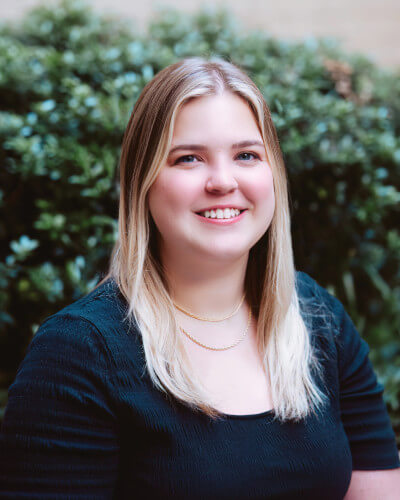
It’s no secret, donor-advised funds (DAFs) have become all the rage in the nonprofit fundraising sphere. And that’s for a good reason. It’s currently estimated that there is more than $250 billion (yes, with a “b”) sitting in DAFs in the United States. And that money can go nowhere except to charities.
A common misconception about DAFs is that they’re only a giving vehicle for major donors and the ultra-wealthy, but 69% of DAF gifts were less than $1,000, according to “The DAF Fundraising Report 2025” by Chariot and K2D Strategies. The reality is that any of your small-dollar and mid-level donors could have money sitting in a DAF account. In fact, the study showed that when existing donors became DAF donors, their annual giving increased by 100%. Now, it’s up to you to steward and solicit the grant from them.
A common misconception about DAFs is that they’re only a giving vehicle for major donors and the ultra-wealthy. But the reality is that any of your small dollar and mid-level donors could have money sitting in a DAF account.
A common misconception about DAFs is that they’re only a giving vehicle for major donors and the ultra-wealthy. But the reality is that any of your small dollar and mid-level donors could have money sitting in a DAF account.
How to Solicit DAF Grants From Donors
Need some ideas on how to do this? Consider one or more of these approaches.
- Provide easy access to a donor’s online DAF portal from your donation form. This can be in the form of DAFPay, a platform by Chariot, or a free DAF Widget such as DAF Direct or DAFwidget by MarketSmart. Include easy access to your organization’s registered name and EIN for a seamless experience.
- Include a mention of DAFs in your direct mail and email solicitations. Let the donor know that your organization accepts DAF grants and provide easy access via a vanity URL or QR code to a page with further information on DAF giving to your organization.
- Send a postcard or even an entire direct mail campaign directed at DAF giving. Target previously DAF donors and other prospective DAF donors. Follow this up with an email campaign or an SMS campaign to stay in front of these donors.
- Provide incentives for DAF giving. Ahead of matching gift campaigns, send an email to donors to give them “early access” to the match, or an increase in match multiplier (three times instead of two times, for example) if they make a gift to the campaign via DAF. Sending this email ahead of the official launch of the matching gift campaign allows the donor to make a grant and have it arrive at your offices before the match deadline.

How to Keep DAF Data Clear in Your Database
Now you’re seeing more DAF gifts! But you can’t stop there. One of the biggest mistakes organizations make with DAF gifts is what they do after they receive it. Make sure your data is clean and donors are recognized for their generosity with these tips.
- Record all available data. It is true that some gifts come with only the name of the DAF provider and cannot be tied back to a donor, but it’s not truly anonymous if the DAF comes with a fund name. If the gift still cannot be tied back to a donor through the fund name, record it anyway in case additional information becomes available.
- Do not code other types of giving, such as qualified charitable distributions, employer matches or corporate giving, as DAF gifts. If the individual donor did not initiate the grant — even if some of these gifts are processed using a DAF (such as an employer matching an employee’s gift by using a DAF payment) — they should not be noted as a DAF donor.
- DAF gifts should have their gift date as the date the grant was initiated, not the date the gift was received. Many organizations reported a bump in DAF gifts in January due to miscoding year-end DAF gifts. It can take weeks for a grant to arrive at your office, so entering the gift with the date it arrived can throw off critical campaign reporting data, leading to an inaccurate understanding of your donors’ behavior.
- Send an acknowledgment. Too often, a donor sends a DAF gift and never hears from the organization they gave to. Ensure the gift has been coded correctly as a DAF gift and that the acknowledgment is sent to the donor, not the DAF provider. Remember, DAF gifts are not tax-deductible, so please do not send a tax receipt or include tax-deduction language in the acknowledgment.
The data is clear: DAF giving is only increasing. At a time when organizations across the industry are seeing fewer donors and fundraising becomes more challenging, it’s important to meet donors where they are. For many, that’s with their DAF. Now is the time to start stewarding these donors and soliciting DAF grants by using some (or all!) of these tips and tricks to create an exceptional DAF fundraising strategy for your organization.
Rose Richtmyre is an account executive at K2D Strategies, creating omnichannel fundraising campaigns for clients who are working to change the world. She can be reached at rrichtmyre@k2dstrategies.com.
PRESIDENT’S PERSPECTIVE
Looking Back With Thanks — and Ahead With Excitement
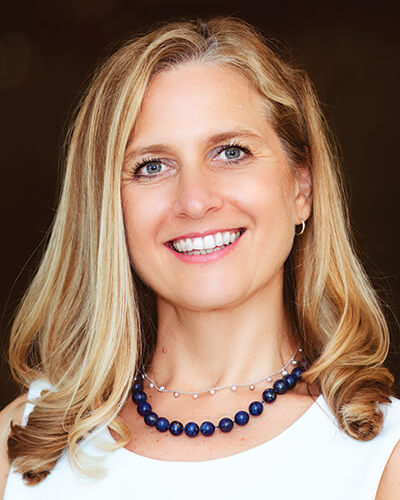
It is with some nostalgia and a ton of gratitude that I write my final letter as DMAW president. It has been a wonderful year connecting with members (and not-yet members), expanding our educational content with targeted in-person sessions and more virtual/webinar content, and working with our active and engaged board on implementing our strategic plan.
A major pillar of the strategic plan is a renewed focus on increasing our engagement with nonprofits as members, participants in events and speakers sharing their knowledge with our sector. Earlier this year, we rolled out a new, lower membership rate for nonprofits and we are thrilled with the response. With a larger goal of ensuring that our colleagues working at nonprofits across the country have access to educational content and networking opportunities, we hope you’ll invite a nonprofit friend or client to join, too!
The end of my term coincides with the retirement of our illustrious and longtime executive director, Donna Tschiffely. I don’t even know how long I’ve known Donna and benefited from her thoughtful, kind, patient leadership. She and DMAW have been synonymous for decades. I am grateful to have had the chance to work more closely with her. She will be missed as a fixture in our community. Fortunately, she shares some parting thoughts in this issue (see page 10). You might need to grab your tissues.
Donna has graciously planned for a long offboarding and has been working closely with Raeshawn Crosson, our incoming executive director. If you haven’t met Raeshawn yet, you are in for a treat. You’ll see her at upcoming events, including Next in Direct in January and Fundraising Fundamentals in February!
Even without these milestones, I often feel nostalgic at this time of year. I love the chilly weather that settles in, the holiday decorations that bring light into darkness, and the generosity that seems to emanate from so many places. We are in the midst of the busy fundraising season where most nonprofits see as much as 50% of their annual revenue come in. So here’s to open wallets, generous hearts and a joyful holiday season. I hope your fundraising is as fabulous as you are.
Thank you for the privilege of serving as DMAW president. See you soon, I hope!
Karin Kirchoff
President, K2D Strategies
kkirchoff@k2dstrategies.com
Committee Spotlight
Get to know the people behind the scenes powering our industry’s top events and programs, and how you too can get involved.
The Power of Partnerships

DMAW is rolling out a refreshed partnership program for 2026. Led by the sponsorship committee, this initiative goes beyond sponsorships to provide year-round brand visibility, richer engagement and a stronger voice for those shaping direct marketing. Rooted in collaboration, this initiative will represent an investment in our shared success.
A Fresh Approach to Industry Partnership
For 70 years, DMAW has been where education, networking and results converge. DMAW’s 1,000-plus members represent a balanced mix of nonprofit, agency and service professionals — the very people driving the campaigns, strategies and innovations that define our industry.
The sponsorship committee set out to modernize how organizations connect with this influential network, and ensure that partnerships mean more than logo placement. Through thought leadership, shared learning and community investment, the new program invites partners to take an active role in shaping the future of direct marketing.
Flexible Tiers, Impactful Benefits
The updated program offers six sponsorship tiers, from Community Builder ($2,500) to Direct Marketing Visionary ($30,000). Each provides scalable opportunities for visibility, collaboration and influence. Highlights include:
- Year-round digital visibility through DMAW’s website, newsletters and social media channels.
- Event recognition at signature programs including Bridge Conference, List Bazaar, MAXI Awards, Production Day and Creative Day.
- Exclusive content collaborations such as white papers, webinars and podcast sponsorships.
- Premium media placements in Direct Impact magazine and DMAW Sourcebook — both of which reach a national audience.
Visionary and Leader partners also receive exposure through The NonProfit Times and Direct Impact spotlights in printed and digital formats.
DMAW partners are more than sponsors — they’re collaborators that share our mission to strengthen the community, empower innovation and ensure that marketing professionals continue to thrive.
Powering DMAW’s Mission
Partnership dollars go further than visibility. They fund the very programs that keep DMAW strong — from professional development and member engagement to innovation and virtual programming that expands our reach across the Tri-State and New England regions.
In 2026, 74% of all partnership revenue will go toward programming while the remainder ensures DMAW continues to deliver top-tier experiences and operational excellence. The expansion of virtual sponsorships now offers partners even more flexibility to reach national audiences that might not attend in-person events, while maintaining a true sense of community. This reinvestment model ensures that every partner plays an active role in shaping the future of direct marketing.
A Partnership With Purpose
The sponsorship committee’s vision is to build a prgram that invests in direct marketing leaders — including strategists, creatives, analysts and fundraisers — who bring measurable impact to organizations and their causes every day. Every contribution fuels education, mentorship and connection, and ensures that the direct marketing community thrives.
Contact the DMAW sponsorship team at sponsorship@dmaw.org or visit dmaw.org to explore partnership options.
Jaime Grams is the senior vice president of business strategy at The PMG Family. Reach him at jaime.grams@pmgdirect.net.
How I Got Here
DMAW members reflect on their starts that shaped their career paths to today

While direct marketing and nonprofit management are now growing fields of study at colleges and universities, many of us took meandering routes to get here. Over the years, I have heard countless stories from DMAW members whose areas of study have been vast. Our newest Direct Impact column, "How I Got Here,” showcases our members’ backgrounds. Enjoy the next installment, featuring Jamie Natelson and Zakeia Rodgers — and contact us at comms@dmaw.org if you’d like to be featured.
Joanne Wilson is the vice president of advancement operations at Humane World for Animals and DMAW board vice president.

Senior Vice President of Client Strategy
Moore
I knew I wanted to live in Washington, D.C. I also knew I wanted to do something that meant something. My planned path was international economic development, so I set my sights on a master’s degree from George Washington University.
What I did not understand at the time was that the most important thing in D.C. (and probably in life) is connections and relationship-building. I did not pursue the right volunteer or internship opportunities, and I had no idea what an informational interview was, let alone how to set one up.
So, post-graduation, I found myself making fundraising calls at The Smith Company. They had a great client list and worked with nonprofit organizations that actually made a difference. One day during my shift, I called Dennis Smith (yes, that Dennis Smith — the owner of The Smith Company) on behalf of Emilys List. I stayed on script and asked him to renew his membership. He kept asking if I knew who he was. I said I did, but I would not break from the script or back down until he renewed.
The next day, I was hired as an account executive. That call led me to connect with the smart women at Herzog-Swayze, build a career-long relationship with Sarah Shesky Harris, and eventually land on the doorstep of Cheryl Gregory.
The rest, you might say, is my-story.
"Do you like cats?" That was the headline of the Craigslist job posting that changed my life.
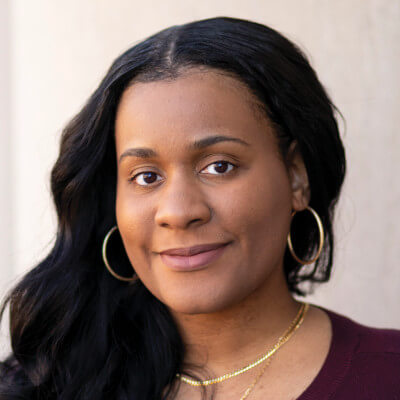
Head of Marketing
Animal Legal Defense Fund
It was for an entry-level development assistant at a national animal protection nonprofit — yes, one that focused exclusively on protecting cats. At the time, I had just graduated college and was caught between law school (my “serious” plan) and grad school (in something still TBD). I knew I wanted to make an impact, maybe even work in government or policy someday. [...] Fast forward — I was hired, and within two weeks, everything flipped. The associate director of direct response gave notice, her colleague was off to law school, and suddenly I was absorbing crash courses in direct mail, email campaigns and donor stewardship at lightning speed. It was chaotic, overwhelming — and I loved every minute of it.
Fundraising wasn’t a career I ever planned. Honestly, I had the same misconceptions many people do: overworked, underpaid, “not a real career.” [...] But I quickly learned fundraising is smart, strategic, and — at least for me — deeply fulfilling work.
That first job opened doors I never expected. Thanks to connections with the agency partners I worked with [...] I landed at the Animal Legal Defense Fund as the direct marketing manager. Now, I’m the head of marketing, still overseeing mail and digital fundraising (and everything in between) because, truly, I can’t pick a favorite.
Looking back, it’s funny to think I almost went to law school. Now I work alongside brilliant lawyers every day and can confidently say: Law school probably wasn’t for me. Instead, I built a career that I find meaningful, challenging and full of joy. And sure, my mom still wishes I’d been a lawyer. But she stopped worrying so much once she realized nonprofits actually can pay decently.
Balancing Reach and Relationships in Fundraising

Direct response professionals know the drill: Calendars collide, vendors pull in different directions, and every department has its own definition of success. The challenge is keeping the donor journey at the center, no matter the size of the organization.
Large programs with annual revenues of more than $10 million can build highly segmented journeys that move donors from acquisition to monthly sustainer to mid-level upgrade with predictive models, multichannel campaigns and A/B testing. Smaller programs with receipts less than $50,000 operate on a more intimate scale. Regardless of size, fundraising can still map intentional journeys that invite advocates to become donors and members to become sustainers, while also engaging supporters in ways that may lead to donor-advised fund grants or legacy commitments.
The Central Role of Direct Response
Direct response marketing teams answer to development leadership, and manage alignment with consultants and vendors, as well as across departments including finance, legal, production, data management and programs. Alignment risks arise when one stakeholder prioritizes volume, another margin, and another brand consistency — while all still demand variety.
In medium and smaller organizations, staff often wear multiple hats, managing copywriting, campaign planning, list management and donor services simultaneously. Larger organizations have more specialized roles, but require constant coordination and vendor oversight. Partnerships and communication tools may vary, but direct response teams communicate with donors, supporters and advocates so they feel valued and informed, and with internal leaders and partners who help shape campaign success.
Shared Success Metrics
Misalignment often stems from different departments measuring different outcomes. One way to address this is by publishing a single scorecard so that fundraising, marketing and program staff can see the same success picture. Financial targets should be paired with engagement measures such as retention, lifetime value and donor affinity, creating a shared understanding of what success truly looks like.
Cross-Functional Communication
Consistent communication helps bridge gaps between teams and align priorities. Planning calendars, campaign briefs and regular check-ins prevent duplication. Large nonprofits benefit when they borrow the agility and experimentation of smaller teams, while smaller organizations can learn from the discipline of larger ones — capturing data, investing in infrastructure and applying insights systematically.
Integrated Planning Cadence and Goals
Coordinated planning ensures that all stakeholders pursue shared outcomes. Teams should lock in campaign themes and audiences together, defining success across functions by pairing revenue targets with retention, lifetime value and donor satisfaction metrics. Direct response drives both mission impact and cash flow, so share results through intranet platforms or internal communications.
Vendor Alignment and Accountability
Vendors play an essential role in executing complex campaigns, making coordination and accountability critical. A single point of contact or shared platform helps manage project scopes and key performance indicators. Reviewing vendor performance against priorities and return on investment ensures focus, while quarterly all-vendor meetings promote collaboration.
Donor-Centric Storytelling
Storytelling builds emotional connection and long-term donor loyalty. Mapping the donor journey and sharing it across departments ensures consistency. Personalization and impact stories deepen engagement, while donor and volunteer feedback helps refine messaging.
For direct response professionals, success comes from turning fundraising communication into authentic connection — guided by clarity of mission, metrics and relationships that make ambitious goals achievable.
Cheryl Lovinsky is the managing director at National Chamber Ensemble where she leads operations, grant development, audience growth and board management.
Not Goodbye, But Thank You
My dear DMAW friends,
As I sit down to write this letter for Direct Impact, I find myself both grateful and a little wistful. After many wonderful years with the Direct Marketing Association of Washington, the time has come for me to step aside and retire. Saying those words out loud still feels a little surreal, because DMAW has been so much more than a job for me — it has been a community, family and place where I’ve had the privilege of working alongside some of the most dedicated professionals I know.
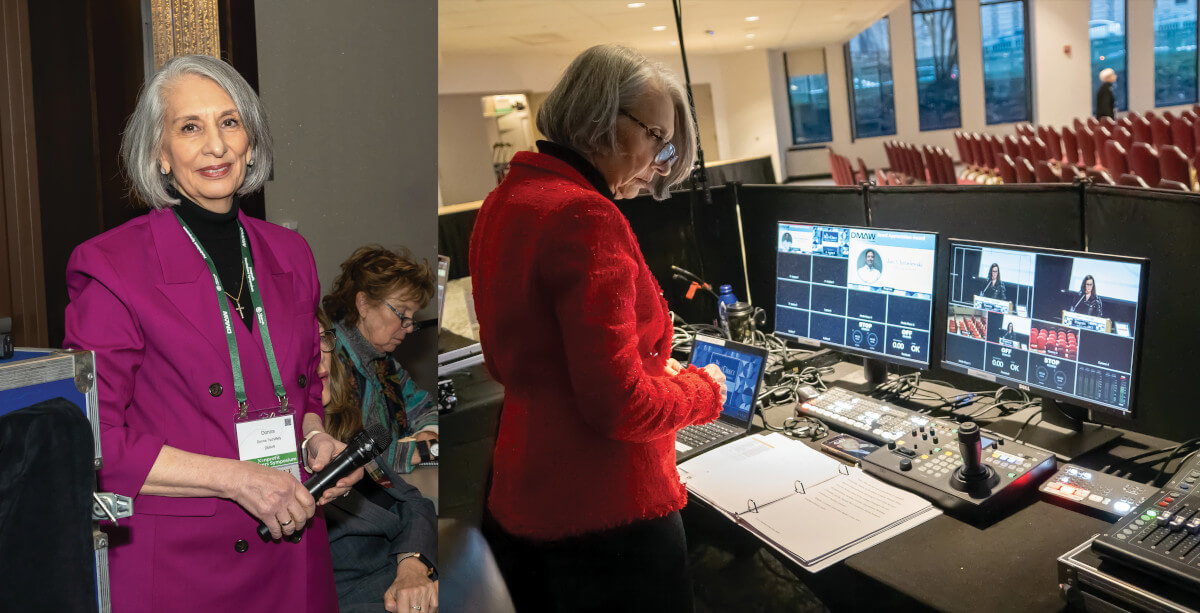
When Geoff Peters, 2007 DMAW president, and the executive committee decided to take a chance on me, the organization was facing a number of challenges. At the same time, momentum was starting to build around a brand-new endeavor — the Bridge Conference, which had launched in 2006. I stepped into both leadership roles knowing there was much work to do, but also sensing tremendous possibilities. Looking back now, I am so proud of what we accomplished together: strengthening DMAW’s foundation; growing our programs and community; and helping to shape the Bridge Conference into the nationally recognized event it is today.
What has always impressed me most is the generosity of spirit among DMAW members — your willingness to share knowledge, lift one another up and give back to our industry. I’ve worked in several business sectors, and I can confirm that sharing is not a widespread practice! That spirit has inspired me every single day.
Many of my fondest memories come not just from meetings and events, but from the times we gathered as friends — like board retreats at my home, where I so thoroughly enjoyed preparing delicious (hopefully!) desserts to surprise you. It was my small way of saying “thank you” for your commitment, and those moments reminded me that DMAW has always been about more than professional excellence; it’s also about the friendships and sense of family we’ve built along the way.
As I prepare to step into my next chapter, I am comforted and excited knowing who will be stepping into the role of executive director. Many of you already know Raeshawn Crosson, and those who don’t will quickly understand why I call her my “sister from another mother.” She is exactly what DMAW needs to carry our community forward. With the support of a strong and committed board, Raeshawn brings the energy, freshness and vision to lead DMAW into its next chapter and deliver on an ambitious strategic plan for growth. I am thrilled to pass the torch to someone I admire so much, and I know you will embrace her just as warmly as you have me.
At the upcoming Best of Direct on Dec. 4, the DMAW board will be presenting me with the Changemaker Award. I’ll admit I’ve never really thought of myself as a changemaker. I’ve simply tried to lead with care, connection and trust. The kind words and praise I’ve received lately have been overwhelming. It’s not always easy for me to take praise because I know the mistakes I’ve made and the times I could have done better. But if my time at DMAW has made a difference, it’s because of the extraordinary people I’ve had the privilege to walk alongside.
The work our members do — the nonprofits and the companies that support them — is both important and inspiring. Truly, our country would suffer greatly without the commitment and impact of the nonprofit sector. To have had even a small role in supporting that work through DMAW has been one of the greatest honors of my life’s work, and a highlight of my 53-plus year career.
I want to extend my heartfelt thanks to the incredible DMAW staff I’ve had the privilege of working alongside over these 18 years — past and present. Your talents, creativity and commitment have strengthened this organization and supported me personally in ways too many to count.
Equally important are the professional partners that have walked alongside DMAW and Bridge — the Association of Fundraising Professionals, Washington, D.C., Metro Area Chapter, The Nonprofit Alliance, NonProfit PRO, The Nonprofit Times and many others. These collaborations have enriched our community, strengthened our events and amplified the impact of our work. I am grateful for the friendships and shared vision these partnerships have brought.
To our volunteers who power Bridge and DMAW: You’ve shown up, lifted up, and made magic happen. I’m grateful for your partnership — and even more grateful for your friendship. I truly wish I could name every one of you, but it would take up the entire issue of Direct Impact!
And of course, to my husband, Ron Guberman — my partner in every sense of the word — thank you for supporting me every step of the way, offering encouragement and even lending your professional expertise in video and DRTV. I could not have done this work without your steadfast support, and I am profoundly grateful.
As I reflect on this journey, I would be remiss not to acknowledge the true source of my strength. I have been deeply blessed by God, and my faith has carried me through both successes and challenges. It has been the foundation of my resilience, gratitude and hope — and it will remain with me as I enter this next chapter.
Though I am retiring, I hope to stay in touch — and I would love to hear from you. You’ll be able to reach me at donnat@conferenceinc.com.
Please think of this not so much as a “goodbye” but as a heartfelt “thank you.” I am deeply grateful for the lifelong friendships I’ve gained, the lessons I’ve learned and the memories we’ve created together. I will always be rooting for the success of this remarkable organization and the incredible people who make it thrive.
With the deepest of heartfelt thanks,

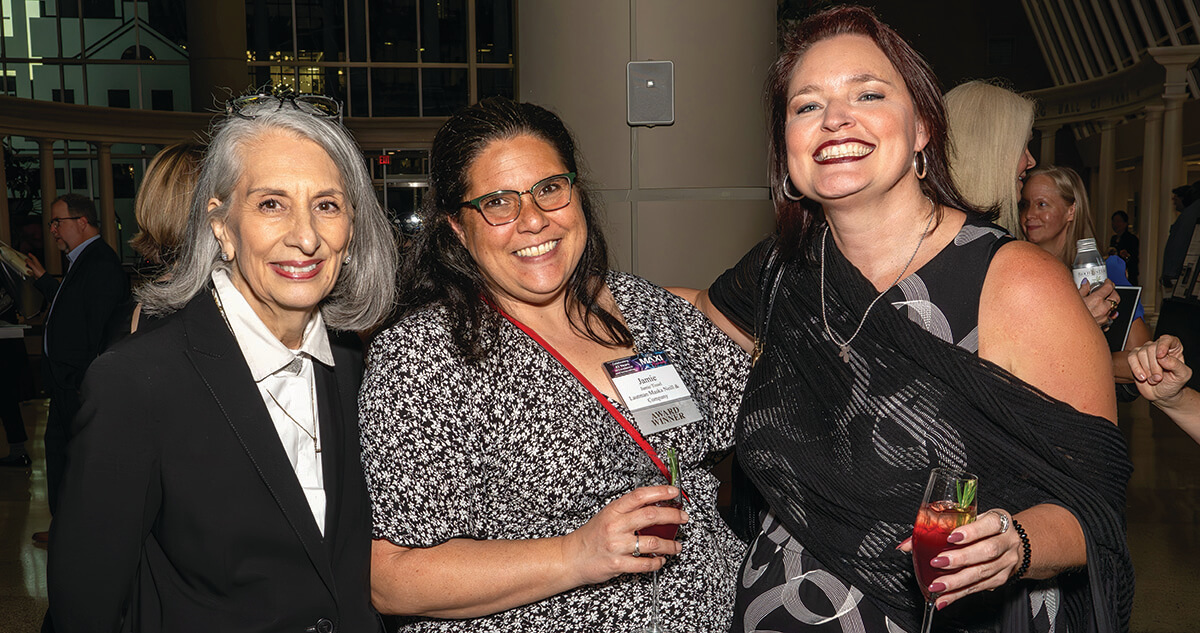
Meet Your New Teammate: Agentic AI, the Superpower for Social Good

Every missed connection costs a mission. In today’s nonprofit landscape, shrinking donor attention, overflowing inboxes and rising digital ad costs don’t just make life harder — they put critical funding, vital programs and even organizational survival at risk. At the same time, teams are asked to do more with less.
When 60% of nonprofit marketers report staffing shortages, that doesn’t just mean administrative headaches. It means fewer communities reached, fewer donors retained and more staff burning out under impossible demands.
Nonprofits are expected to work miracles on shoestring budgets. While we can’t give them time machines, we can give them something just as powerful: agentic artificial intelligence (AI), the missing link your employees need to unlock those superhuman abilities.
With its ability to work semi-autonomously and achieve goals at unprecedented scale, agentic AI is the added teammate nonprofits have long needed. Most importantly, this trusted adviser and teammate doesn’t replace the people at the core of an organization. In a sector where workload outpaces headcount, it can safeguard against burnout (a concern for 95% of nonprofit leaders, according to The Center for Effective Philanthropy’s “State of Nonprofits 2024”) and serve as a force multiplier for mission-driven work. When your team spends less time buried in spreadsheets, they can spend more time connecting with donors and maximizing impact.
Empowering Your Direct Marketing Team
Think of agentic AI as a tireless, highly skilled teammate who never sleeps, keeps track of your most critical tasks and valuable information, and always has your back.
Unlike a “black box” tool, agentic AI is built to be directed, approved and refined by humans, ensuring every decision aligns with your mission. This is essential for nonprofit adoption, where organizations often handle highly sensitive information about donors, volunteers and participants. By working within your data guardrails, agentic AI ensures surfaced insights and opportunities respect privacy and security requirements.
But what makes this framing truly credible is the feedback loop: Agentic AI improves as it collaborates with staff. At first, it behaves like an eager new hire, taking first passes at repetitive tasks like drafting appeals, segmenting lists or suggesting ad optimizations. Human staff stay in the loop, reviewing outputs and deciding what to approve, revise or reject.
Over time, the AI begins to notice patterns. It adapts to your organization’s tone of voice, preferred outreach cadence and the boundaries that must never be crossed. This learning process is what transforms AI from a tool into a teammate and adviser, extending human judgment rather than replacing it.
With that trust in place, employees can fully tap into their newfound “superhuman” abilities.

Consider a few practical examples:
- Smarter donor segmentation: If a donor always replies to texts but ignores email, AI can automatically segment them, draft a tailored text appeal and queue delivery for the right moment. Staff remain in control, approving messages and ensuring alignment with the mission.
- Volunteer matching: AI-powered matching can surface the best candidates for outreach based on prior interactions, interests and location, which helps volunteer directors focus their energy where outcomes will be strongest.
- Social listening and trend tracking: AI constantly monitors online conversations, flags emerging topics and suggests ways for staff to capitalize on trends before they fade.
Beyond these examples, agentic AI prevents missed opportunities by following up on abandoned donation forms, reallocating ad budgets when campaigns underperform or flagging at-risk donors for re-engagement. Every stone gets turned, and no opportunity slips through the cracks due to limited bandwidth.
Closing the Gaps: Bridging Missed Connections
One of the biggest drains on nonprofit marketing resources is missed connections, when the right funder, donor or community partner doesn’t hear from your organization at the right time.
These gaps are often caused by manual grant research, inefficient donor follow-up or siloed visibility into community priorities. As a result, opportunities slip away and valuable relationships stall.
Agentic AI helps bridge those gaps by working as an always-available grant scout, donor researcher and connection-builder.
For example, instead of staff spending days combing through databases and struggling to find a starting point, AI can work overnight to not only surface mission-aligned funding opportunities, but also to jumpstart the grant writing process itself, matching your nonprofit’s impact areas to funder priorities and drafting tailored first-pass applications.
Additionally, instead of taking a one-size-fits-all approach and missing lapsed donors, AI can microtarget outreach at the exact moment it’s most likely to work, even if that means sending a late-night text to the small group of people who will actually respond.
This kind of proactive, adaptive support means fewer missed opportunities and more successful connections, ultimately unlocking greater funding and deeper impact.
Turning Burnout into Breakthrough
Nonprofit marketers are constantly in a race against time, juggling shrinking budgets, rising donor competition and ever-growing demands. Standing still isn’t an option; it means fewer donations, fewer lives touched and, for some organizations, the risk of closing their doors.
Agentic AI changes the equation. It’s not here to replace the people who power your mission; it’s here to multiply their impact. Acting as a full-time, never-tired teammate, it learns alongside your staff, anticipates needs, uncovers opportunities, and keeps every connection alive.
Nonprofits that act now will be the ones that secure more funding, build stronger donor relationships and extend their reach into every community they serve. Those that don’t risk falling behind and potentially having to shutter their operations.
With agentic AI, the sector can finally trade burnout for breakthrough. The future of social good will be defined by those who seize this moment.
John Manganaro is the chief product officer of Bonterra, a social good software company with donor engagement, supporter engagement, program management and corporate social responsibility (CSR) tech solutions. John leads product management, user experience and design, and data science teams across the organization. Previously, John was the chief product officer at Social Solutions Global, now Bonterra’s program management solution.
In his expansive career, John has served as vice president of product and analytics for DRIVIN and management consultant for Pricewaterhouse Coopers product manager positions with SaaS companies, including Apartments.com and Cars.com. John is based in Austin, Texas, and received his MBA from Northwestern University Kellogg School of Business, and a Bachelor of Science in communications and English from the University of Illinois Urbana-Champaign.
A New Route to Donors: Leveraging Social Media Influencers to Reach the Next Generation

Nonprofits have faced a consistent challenge for decades: How do we reach the next generation of supporters?
Amid major changes in technologies and types of appeals, one core element has remained constant — storytelling is still the key to a great campaign. This is truer than ever, even as organizations must adapt their stories to catch the attention of millennials, Generation Z and the newest kids on the block, Generation Alpha.
By being open to new ways to tell your nonprofit’s story, you can tap into a totally new audience and help them fall in love with your story.
For the 75-year-old National Trust for Historic Preservation, this was a powerful tale of balancing tried-and-true direct response strategy with a forward-thinking, creative approach to engaging with new audiences.
An Unexpected Partnership
The National Trust for Historic Preservation, a privately funded nonprofit, has led the movement to save America’s historic places for many decades. In addition to presidential mansions such as James Madison’s Montpelier, or the humble cottage where Abe Lincoln lived during the Civil War, the nonprofit protects many “quirkier” landmarks, too.
Perhaps the best known of these is America’s most iconic scenic highway — Route 66 — which weaves from Chicago to Los Angeles and delights travelers with vintage gas stations, restaurants, neon signs, billboards, murals and Southwest kitsch. Nicknamed the “Mother Road” and “America’s Main Street,” Route 66 has been immortalized in books, songs and movies.
However, a new chapter of Route 66’s history began earlier this year in a very modern way — with a 26-year-old, wisecracking, food-blogging YouTube content creator sending an email to the National Trust for Historic Preservation. This social media influencer was Dylan Huynh, whose YouTube channel at the time had more than 700,000 subscribers — and has since grown to 2.2 million.
Dylan told the nonprofit that he was in the process of creating a fun, five-part YouTube miniseries called “I Tried Every Restaurant on Route 66,” which blended food, travel and history. Inspired to help preserve the diners and landmarks he encountered on his journey, Dylan offered to fundraise for the National Trust for Historic Preservation’s “Preserve Route 66” grant program.
This would have been a dream opportunity for any nonprofit, but it also presented a logistical challenge. The young influencer wanted to launch his campaign within one week. This required the team at the National Trust for Historic Preservation to act with a level of speed and agility that most direct mail or email campaigns simply can’t keep pace with.
Agility as a Core Competency
For this project to succeed, the National Trust for Historic Preservation needed a technology platform that could keep pace. As a long-standing partner, Engaging Networks could provide the flexible tools to help the nonprofit’s team make it happen.

The nonprofit was able to quickly spin up a fully branded, peer-to-peer donation page and embed the links within Dylan’s videos. This agility was a critical element of the campaign’s success.
In this way, the National Trust for Historic Preservation provided Dylan with the donation tools, allowing him to focus fully on the outreach and storytelling. The donation page was designed to be mobile-first and user-friendly, allowing Dylan’s young followers to donate with a few easy clicks. It also included a donor roll and comment section, to foster the sense of community and storytelling that’s key to engaging on social media.
So why did this collaboration work? It had several key ingredients: an authentic voice, a creator-led approach, custom assets, a mutual mission and cross-promotion. As Dylan said in one of his videos, “If these legacy businesses were gone tomorrow, I think it’d be a huge shame.”
By being open to new ways to tell your nonprofit’s story, you can tap into a totally new audience and help them fall in love with your story.
The Results: More Than Just Donations
The campaign’s performance was nothing short of spectacular. The five videos, uploaded from June 28 to July 2, 2025, received more than 3 million total views and more than 102,000 likes. The videos also generated more than 4,500 comments, and on a single day, he gained 16,000 new subscribers.
While the donations of more than $6,000 were a remarkable win, the much greater benefit for the National Trust for Historic Preservation was the opportunity to acquire and engage with a completely new audience. The videos led to an 83% percent increase in visits to the organization’s Route 66 stories and landing pages.
The campaign created a seamless supporter journey by blending social media, email and landing pages. The nonprofit captured detailed data on every lead, which it used to build targeted welcome series to integrate with its long-term email and direct mail strategies.”
Get Your Kicks on Route 66?
The clear lesson for nonprofits is that new media provides a great option for attracting and engaging a younger, digitally native audience. By partnering with the right content creators, and using technology that allows you to move in fast and agile ways, it’s possible to bridge the gap between our rich institutional histories and the modern world of online influencers. With these tools, you can tap into new audiences of donors and donor prospects who are just waiting to hear your nonprofit’s stories — even if they don’t know it yet.
Faizan Faruq is head of sales at Engaging Networks, working with emerging nonprofits that leverage technology to drive their missions forward. He brings a diverse background in technology, politics and the nonprofit sector, having helped enterprise organizations achieve consistent revenue growth. A proud Floridian, Faizan advocates for environmental protection and LGBTQ+ rights. Outside of work, he’s a passionate concert-goer, dancer and pop culture fan. He lives with his husband, their 10-year-old son, and their two dogs — Snoopy the dachshund and Gemma the shih tzu.
It’s Time to Rethink Generosity

You’ve read about it before: Individual giving is down. Donor retention rates are low. These trends have been in the headlines for so long that they feel unchangeable.
But new research reveals that people are (and remain) generous — we just need to redefine what “generosity” means.
“The Generosity Report: Data-Backed Insights for Resilient Fundraising,” a recent research study from Neon One, examined the behavior of nearly 100,000 donors who gave $5,000 or less annually between 2020 and 2024. What we found is that people’s generosity grows as they engage with nonprofits in different ways over longer periods of time.
That generosity just may not be easily captured in transaction dashboards or forecasting reports.
What we found is that people’s generosity grows as they engage with nonprofits in different ways over longer periods of time.
High Affinity — Not Donation Amount — Indicates Long-Term Value
When we analyzed five years of donor behavior, we included their one-time gifts, recurring donations and pledges. But we looked beyond their transactional history, too. Our data set also included their volunteer history, event registrations, peer-to-peer activity participation and nonprofit memberships.
Once we established giving benchmarks for the panel as a whole, we divided the panel into cohorts based on different behaviors. What we found is that, in nearly every group, supporters who engaged with nonprofits in ways other than making one-time donations gave more than those who simply made straightforward donations. And their financial generosity accelerated over time.
We also found that, regardless of how someone engaged with a nonprofit, their first-time gift size was not an indicator of future financial support.
Instead, someone’s general affinity for a particular organization or cause is a better indicator of their potential to donate generously in the future.
A Shift in Mindset Requires a Shift in Tactics
Many nonprofits prioritize outreach to donors who give at or above a certain level. There’s nothing inherently wrong with this. But focusing exclusively on cultivating relationships with donors based on transaction amounts can mean that other supporters who may donate generously in the future fall through the cracks.
Take volunteers as an example. Financial gifts from volunteers tended to be at or below the greater panel’s giving benchmarks for the first three years they were engaged with a nonprofit. But their donations quickly outpaced the rest of the panel in their fourth and fifth years.
The average volunteer gave $143.75 in their first year — about 22% less than the panel as a whole. But if a volunteer gave consistently over five years, they contributed a cumulative average of $4,635.39 — nearly 53% more than the panel benchmark for five-year donors.
A volunteer’s $143.75 probably won’t trigger any special outreach from a development department. Many nonprofits are even leery of soliciting volunteers at all. But the data shows that volunteers are willing to donate financially in addition to lending their time and skills to an organization, and they’re willing to increase their financial gifts over time.
This is only one example. We saw a pattern repeat over and over again: People support their favorite organizations more and more over time. Together, our cohorts’ behaviors reiterated that sustainable fundraising doesn’t rely on targeted outreach based on transactional history. Instead, it relies on cultivating long-term relationships with different groups of supporters based on their affinity for a cause regardless of how that affinity manifests itself.

When Affinity Comes First, Donations Will Follow
We can change the trends we see in headlines and sector reports. We can reengage individual donors and keep them involved for years to come. But doing so will require redefining “generosity.”
A donor’s gift size doesn’t necessarily signal financial generosity in the future. Someone’s affinity is a much more reliable indicator of their potential giving, especially when that affinity is sustained and reinforced over time.
This is a subtle but important shift, and it will necessitate some subtle but important changes to the way nonprofits approach fundraising.
Cultivating relationships with donors based on the size of their gift isn’t a bad tactic. But, if nonprofits are to build sustainable fundraising programs, transaction size can’t be the only trigger for targeted outreach. Other forms of support — like volunteering, event registration and other engagements — are indicators of a deep affinity for an organization’s cause and must also be celebrated. Retention and ongoing engagement must be a priority for all supporters, regardless of how their generosity takes shape.
Abby Jarvis is a writer, speaker and researcher at Neon One. Her 12 years in the nonprofit technology industry have been dedicated to understanding how and why donors support their favorite causes, studying donor trends and behavior, and sharing practical tactics nonprofits can use to build successful fundraising programs.

Our industry’s next generation of leaders are already making an impact! Learn more and join them at dmaw.org/ydmaw.
When In Doubt, Lean Into the Hustle

Let me start with a confession: I was not a kid who knew what they wanted to be when they grew up. In fact, I would confidently answer with “Why do I need a job?” So, it’s no surprise that I changed my degree multiple times and ended up in the catchall, magical bucket of marketing.
I’ve been in the nonprofit sector for seven years and a marketing professional for about 10. Yes, I’m “young” but I’ve got mileage. My path was anything but linear — it was more like a Basquiat painting: chaotic, colorful, but it worked.
I supported myself entirely through college, so I didn’t have the luxury of a leisurely college experience filled with unpaid internships or ramen-fueled self-discovery. I had bills. I had jobs. I had to hustle.
Believe it or not, I started out pursuing classical music. Yep, I was going to be a professional musician. But after realizing my passion didn’t quite meet my patience for practicing scales six hours a day, and my personality didn’t quite match the level of competitiveness needed for that world — I pivoted.
I graduated with a Bachelor of Arts in journalism, which turned out to be the perfect training for marketing: creativity meets critical thinking, and storytelling meets strategic thinking.
Marketing became my new creative outlet. It was fun, fast-paced and it paid better than playing flute or piano in a pit orchestra. I found myself drawn to the nonprofit world, where I could use my skills to make a real impact. There’s something incredibly rewarding about converting everyday people into environmental advocates, donors and champions for change.
At 22, I packed up my life and moved to Washington, D.C., for a nonprofit job. I didn’t know a single person in the city. I hadn’t even visited before — no elementary school field trip, no college tour. I found a roommate on Craigslist (shoutout to not getting murdered), signed a lease sight unseen and dove headfirst into adulthood.
Was it terrifying? Absolutely. Did I cry in a Trader Joe’s parking lot once because I was sure this was the worst decision I ever made? Also, yes. But those early years taught me resilience, resourcefulness and how to bring campaigns to life under pressure.
Here’s what I’ve learned along the way — and what I wish someone had told me when I was just starting out.
Your Path Doesn’t Have to Be Perfect to Be Powerful
You don’t need a straight line from degree to dream job. Spoiler alert: Dream jobs are what you make them. One job shouldn’t be your everything. Detours build character — and sometimes, they lead you exactly where you’re meant to be. Be patient. You are exactly where you are meant to be.
My very first job in marketing was for a healthcare compliance tech company. Important? Sure. Boring? Definitely. But it taught me every company out there needs a good marketer behind them to sell their products.
Creativity Is Your Superpower
Your ability to think outside the box is what sets you apart. Lean into it, especially in a world where we have technology like AI.
Nonprofit Marketing Is a Masterclass in Doing More With Less
Budget constraints? Limited staff? Welcome to the club. But here’s the thing: Constraints breed innovation. You’ll learn to be scrappy, strategic and shockingly effective. I have the luxury of working for a larger nonprofit now, but those skills learned from understaffed, underbudgeted, smaller nonprofits were invaluable.
Find Your People
Mentors, peers, coworkers who get it — these relationships are remarkable. Yes, it’s difficult to make new friends as an adult. On the flip side, remember: Not everyone is your friend, and that is OK.
Laugh Often
Seriously, the professional world is weird. Don’t take yourself too seriously. Embrace the absurdity of life.
Hold Space
Never forget that people are just that — people. You are working with someone’s sibling, parent, partner. Hold space for them. Have empathy. Show compassion. And always bring your most authentic self to work.
Never Forget the Hustle
Yes, I am tired. We are all tired. But don’t let life direct you — you’re in charge. Don’t lose that spark. If your job no longer adds to the sparkle, find a new one or a new focus within it (easier said than done, I know). Your 9 a.m. to 5 p.m. job doesn’t have to be your everything. Make space for things that bring you joy. The more space you give those things (hobbies, passions), the more they will appear in your life.
Hustle doesn’t have to mean climbing the corporate ladder. Climb — heck, build your own ladder to wherever you want to go. Play big.
So, if you’re feeling overwhelmed, underqualified or just plain tired, you’re not alone. The hustle is real, but so is the joy. You’re building something. You’re learning. You’re growing. Don’t stop.
Erin Lewis is the digital production project manager at The Nature Conservancy. Erin can be reached at erin.lewis@tnc.org.

MEMBER SPOTLIGHT
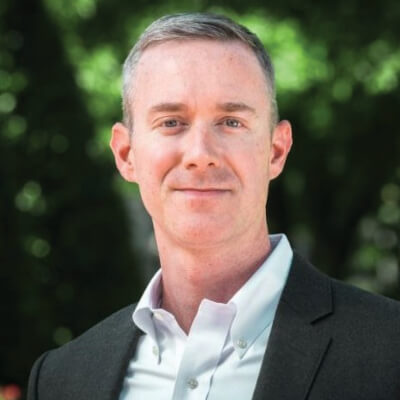
Director of Nonprofit Data
Epsilon
John.wilburn@epsilon.com
For many, the direct marketing world isn’t one they planned to get into. People often find their way in seemingly by accident — and decide it’s where they were meant to be.
This is the path that led John Wilburn, director of nonprofit data at Epsilon, into direct marketing. His career began after graduating from Washington, D.C.’s American University. He ended up landing a job at a well-known agency. Along the way, he had the opportunity to meet some of the many mentors who have helped shape the trajectory of his career.
That trajectory has truly run the gamut. Throughout his career, Wilburn has found himself working not only at agencies, but also at nonprofits and data partners.
“My time managing the direct response program at the National Park Foundation was especially formative,” he said. “I learned a lot about multichannel outreach, donor management and working with an incredible team. My current role at Epsilon has given me even more of a perspective into the industry, the various partners that work with organizations and the different ways nonprofits manage fundraising.”
Despite his success in the direct marketing industry, Wilburn has toyed with the idea of a career shift.
“As much as I try to escape, I keep getting drawn back to the industry,” he said. “However, I have been able to switch between client side and supporting partner roles, which keeps things interesting.”
So, what keeps his feet firmly planted in the direct marketing world?
“I continue to stay in this industry for two reasons,” Wilburn said. “First, I really enjoy the statistical and scientific aspect of direct response fundraising. Second, and most importantly, I really appreciate being able to support so many wonderful — and increasingly important — nonprofit missions.”
On a personal note, Wilburn recently moved to Portland, Maine, where he lives with his husband and their dog.
What is the most helpful step you took to advance your direct marketing career?
Switching between nonprofits and supporting partner companies really helped give me a full perspective of the industry.
What advice would you offer a novice who wants to move up in direct marketing?
Meet as many people as possible, and share learnings with others in the industry.
How long have you been a DMAW member?
I think I have been a member off and on for the last two decades!
Describe your life in six words.
Driven by purpose, grounded in data.
QUICK TAKES
![]() FILM:
“Jurassic Park” — a classic
FILM:
“Jurassic Park” — a classic
![]() RESTAURANT:
Wayside Tavern — best burger in town
RESTAURANT:
Wayside Tavern — best burger in town
 BOOK:
“Paved Paradise: How Parking Explains the World” by Henry Grabar
BOOK:
“Paved Paradise: How Parking Explains the World” by Henry Grabar
![]() LEISURE INTERESTS:
Travel and baking
LEISURE INTERESTS:
Travel and baking

Direct Impact is the member exclusive magazine from the DMAW, login to read the full issue and access the archives. Not a member yet? Join today to get every issue and more!
